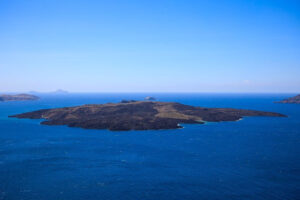
Jacob Willcox has ignited a storm of controversy in the World Surf League (WSL) Challenger Series, expressing his frustration with the conditions at Huntington Beach. The Australian surfer’s candid remarks highlight growing discontent among athletes about the challenges and perceived inequities within the series.
Willcox’s comments come at a time when the WSL is under scrutiny for various reasons, including the recent revelation that champions are required to pay for their own trophies. In a recent interview, Willcox did not hold back, stating, “Teahupo’o was firing, and I’m at Huntington surfing these one-foot shit waves.” He added, “Nothing against Huntington, it’s an iconic event, but in those moments, it drives you to want to be better.”
The Challenger Series: A Grueling Path
The Challenger Series serves as a proving ground for surfers aspiring to join the elite ranks of the Championship Tour, where the world’s best compete in locations like Hawaii and Tahiti. However, the series is often criticized for its demanding schedule and inconsistent wave conditions. Willcox’s remarks underscore the frustrations many surfers feel as they navigate this challenging circuit.
The Guardian recently profiled the series, highlighting the “grueling, often unfair, grind” that surfers endure. Willcox’s use of colorful language to describe the conditions reflects a broader sentiment among competitors. “It can be brutal,” he said. “You can go there, the waves can be absolutely dogshit, and you might not get a chance.”
Surfonomics and the Impact of Climate Change
Amid the controversies surrounding the WSL, another pressing issue looms: climate change and its impact on surf breaks worldwide. The National Oceanic and Atmospheric Administration (NOAA) reports that sea levels are rising at approximately 2.5mm per year, with projections suggesting a 24cm rise along the California coast by 2050.
This environmental shift threatens to alter tides and wave patterns, potentially diminishing the quality of surf breaks. The Save the Waves Coalition has conducted a study on the economic impact of surfing in Santa Cruz, California, revealing that surfing generates $194 million annually. The study warns that sea-level rise could significantly reduce surfable conditions, leading to a potential 40% decline in revenue.
“The data and analysis revealed that all 31 surf breaks evaluated will see a decrease in surfable conditions at 1 foot of sea level rise,” the report states. “Even more alarming, at 3 feet of sea level rise, more than half of all the surf breaks will be significantly diminished or lost completely.”
Efforts to Mitigate Climate Impact
In response to these challenges, efforts are underway to protect and preserve surf breaks. The Save the Waves Coalition is advocating for increased surf reserves and climate adaptation measures. Shaun Burns, a former WSL journeyman, emphasizes the importance of these initiatives, stating, “Coastal policy should aim to support decisions and infrastructure that encourages more Californians to visit surf breaks as there is significant economic value that is generated.”
Meanwhile, in Pacifica, California, activists are proposing the construction of an artificial reef to combat sand loss and enhance wave quality. This initiative aims to protect coastal infrastructure and boost local economies through increased surf tourism.
Facing the Future: Adaptation and Innovation
As surfers and communities grapple with these challenges, some experts advocate for a “managed retreat” from vulnerable coastal areas. UC Santa Cruz professor Gary Griggs warns, “We have to acknowledge that the climate is changing. We’re holding on to an edge that’s moving.”
Despite these daunting prospects, the surfing community remains resilient. The Save the Waves study provides policymakers with valuable data to inform future decisions, highlighting the economic and cultural significance of preserving surf breaks.
As the autumn swells approach, surfers prepare for the upcoming season, armed with both optimism and a keen awareness of the challenges ahead. Whether through innovative solutions like artificial reefs or advocacy for stronger climate policies, the surfing community is poised to navigate the waves of change.







